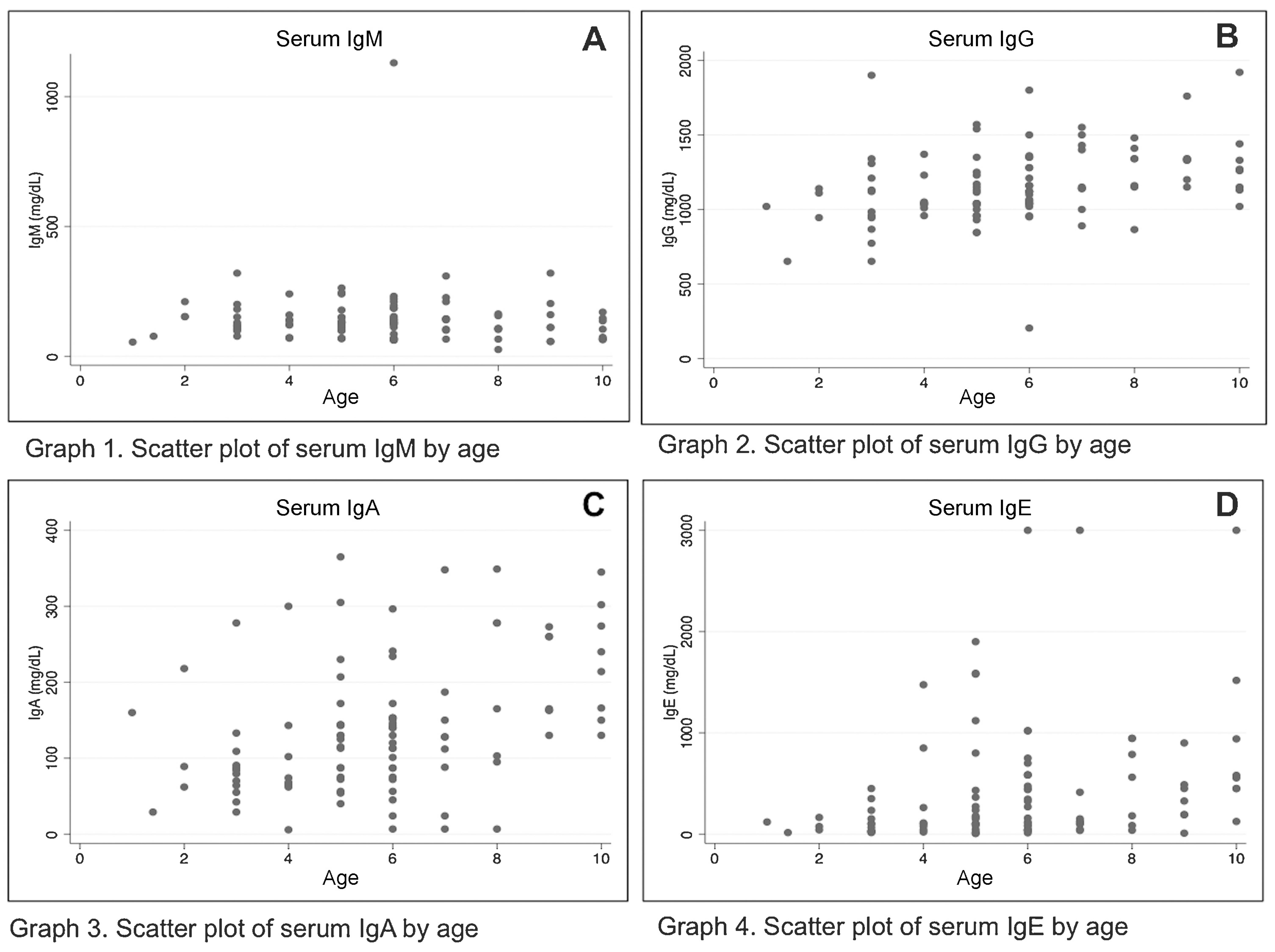Introduction:
Benign idiopathic tonsillar hypertrophy (HBI) may affect a child's quality of life and sleep. Several studies have sought to relate the clinical features of HBI with the infectious and/or immunologic changes that occur.
Objective:
To increase the knowledge of the etiology of HBI.
Data Synthesis:
From 2012 to 2013 we conducted a retrospective observational study of 101 children with HBI who underwent tonsillectomies at Ambulatory ENT General Hospital of the East Zone of São Paulo City, a region with a poor socioeconomic population. Preoperative serologic results were available to confirm mononucleosis, cytomegalovirus, anti-streptolysin O (ASLO) and immunoglobulins. The mean patient age was 5.8 years (55% male, 45% female). Using the Mann-Whitney U test, we identified significant gender differences in the parameters of immunoglobulins (Ig) M (IgM), IgA, and IgE. Forty-seven percent of the patients had increased ASLO levels, and 37% had increased IgE levels.
Conclusion:
An evaluation of a patient's serologic parameters and laboratory results may be relevant to the etiology and prevention of HBI. Based on the results obtained from the study sample, the identification of etiologic agents and causative factors remain a public health challenge that affects the quality of life of children.
child; tonsillectomy; immunoglobulins; immune system

